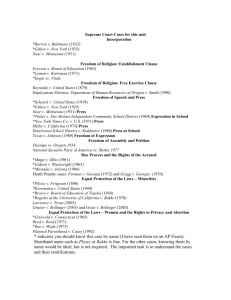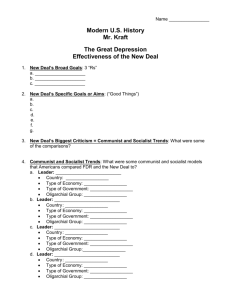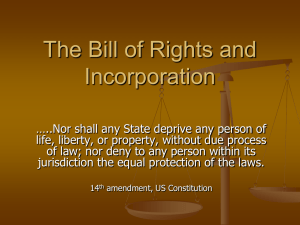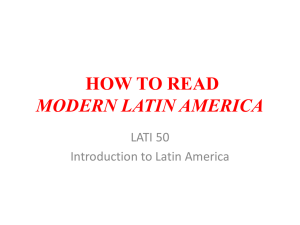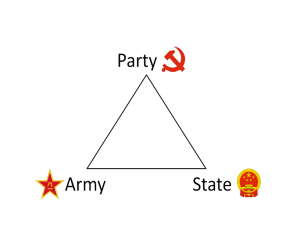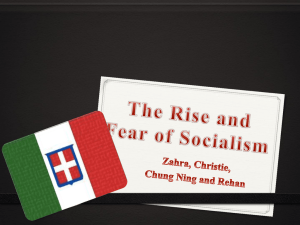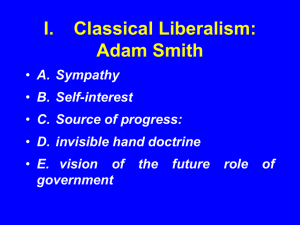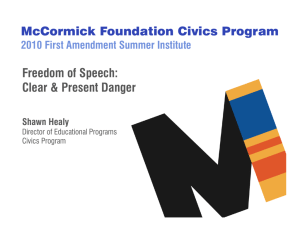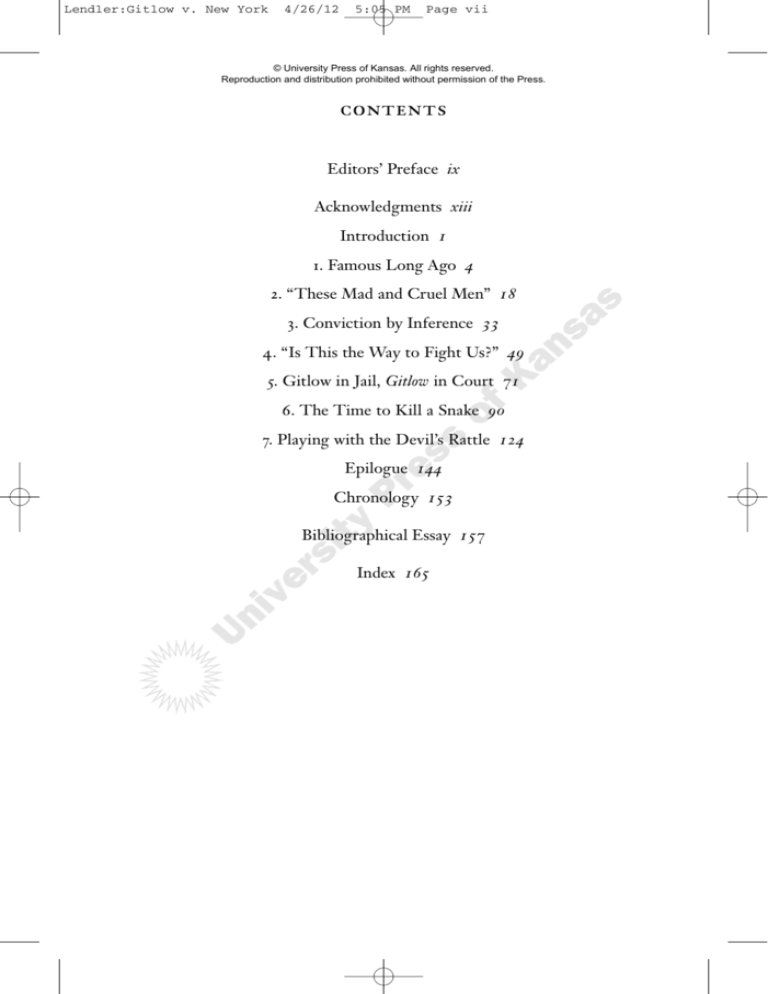
Lendler:Gitlow v. New York
4/26/12
5:05 PM
Page vii
© University Press of Kansas. All rights reserved.
Reproduction and distribution prohibited without permission of the Press.
contents
Editors’ Preface ix
Acknowledgments xiii
Introduction 1
1. Famous Long Ago 4
2. “These Mad and Cruel Men” 18
3. Conviction by Inference 33
4. “Is This the Way to Fight Us?” 49
5. Gitlow in Jail, Gitlow in Court 71
6. The Time to Kill a Snake 90
7. Playing with the Devil’s Rattle 124
Epilogue 144
Chronology 153
Bibliographical Essay 157
Index 165
Lendler:Gitlow v. New York
4/26/12
5:05 PM
Page viii
© University Press of Kansas. All rights reserved.
Reproduction and distribution prohibited without permission of the Press.
Lendler:Gitlow v. New York
4/26/12
5:05 PM
Page ix
© University Press of Kansas. All rights reserved.
Reproduction and distribution prohibited without permission of the Press.
editors’ preface
From colonial times, the “bad or evil tendency” test for seditious
speech and press has permeated American law, chilling free expression and providing almost untrammeled discretion for state and federal prosecutors to silence their critics. The doctrine is simple:
criticism of the government that tends to undermine public confidence is a crime; speech or writing that might cause disobedience to
law is a crime. The First Amendment to the federal Constitution and
parallel provisions in state constitutions notwithstanding, federal and
state law has punished seditious speech because of its tendency—no
act in furtherance of the perceived threat to public order was necessary. The speech or writing itself was sufficient to trigger the penalty.
Marc Lendler tracks one of the most (in)famous cases of this kind:
the conviction of Communist organizer Benjamin Gitlow for writing and publishing a left-wing manifesto. Gitlow was tried and convicted under a New York State criminal anarchy statute penalizing
“the advocacy by word of mouth or writing . . . the doctrine that
organized government should be overthrown by force or violence, or
by assassination of the executive head or of any of the executive officials of government, or by any unlawful means,” in the wake of New
York’s version of the Red Scare raids after World War I. Gitlow
appealed his case to the New York Court of Appeals and then to the
federal courts. Here, Lendler finds Gitlow guilty of violating the letter of the law: he wanted the violent overthrow of the government,
and his crime was producing a pamphlet advocating that event. But
little did his detractors or his defenders anticipate that this case would
become the vehicle for the Supreme Court’s incorporation of the
First Amendment—that is, its imposition on the states—and for a
ringing dissent that remains one of the finest defenses of the principle of free speech.
Gitlow v. New York (1925) is a case taught in every constitutional law
course, but Lendler offers something far beyond the accounts in casebooks and hornbooks. He brings the case alive. We meet Gitlow, a
dogged and unrepentant radical, as well as his parents and his friends.
They were activists and idealists who, if misguided in retrospect, were
{ ix }
Lendler:Gitlow v. New York
4/26/12
5:05 PM
Page x
© University Press of Kansas. All rights reserved.
Reproduction and distribution prohibited without permission of the Press.
sincere in their beliefs. War and repression further radicalized him,
turning a Socialist assemblyman into a believer in the Bolshevik revolution and an advocate of the Soviet Union. With the United States
in an undeclared war with the Bolshevik regime, postwar labor agitation growing, and anti-Soviet hysteria mounting, Gitlow became an
easy target for prosecution under the New York law. Former New
York City police commissioner William McAdoo would be the Javier
to Gitlow’s Jean Valjean, pressing the prosecution, upping the stakes,
and all but dictating the outcome. The trial judge, Bartow Weeks, was
no more sympathetic, ordering Gitlow to serve his full term of imprisonment at hard labor. With Gitlow’s fate apparently sealed, New York
tried and convicted his fellow Communists. In vain, their counsel
argued that the New York law revived some of the worst aspects of the
hated Sedition Act of 1798.
But Gitlow’s fate was not sealed. Though he surely would have
been pardoned by Governor Al Smith (his codefendants were), he preferred to appeal his case as high as it could go. As his story unfolds
here, we meet some of the most important figures in early-twentiethcentury American law: famous criminal defense attorney Clarence
Darrow, who represented Gitlow at his trial and told the jury, “for a
man to be afraid of revolution in America” is to ignore our own history; New York Court of Appeals justices Cuthbert Pound and Benjamin Cardozo, whose dissent argued that Gitlow’s manifesto was “a
negligible philosophical abstraction” when unaccompanied by any
action; Walter Pollak of the American Civil Liberties Union, who carried the appeal to the U.S. Supreme Court, insisting, “our contention
is that the statute . . . is unconstitutional”; and Supreme Court justices
Oliver Wendell Holmes Jr. and Louis Brandeis, whose dissent concluded that “the only meaning of free speech is that [ideas] should be
given their chance” to be heard. After all, there was “no present danger” in Gitlow’s words.
The quality of Lendler’s research, the wise balance in his treatment
of both sides of the case, and the clarity of his explanation of the
developing notions of free speech enhance his handling of the human
story. And the last of these—Gitlow’s return to Sing Sing and his
eventual pardon, his continuing advocacy of international Communism, and, in his later days, his work as an anti-Communist activist—
x
{ Editors’ Preface }
Lendler:Gitlow v. New York
4/26/12
5:05 PM
Page xi
© University Press of Kansas. All rights reserved.
Reproduction and distribution prohibited without permission of the Press.
provides a fitting climax to the book. Lendler has assembled all the
facts. He has traced the twists and turns of free speech jurisprudence
and the incorporation doctrine through the end of the Cold War. In
the end, he offers his own judgment, but whatever one’s own verdict,
this account is essential reading.
{ Editors’ Preface }
xi
Lendler:Gitlow v. New York
4/26/12
5:05 PM
Page xii
© University Press of Kansas. All rights reserved.
Reproduction and distribution prohibited without permission of the Press.
Lendler:Gitlow v. New York
4/26/12
5:05 PM
Page xiii
© University Press of Kansas. All rights reserved.
Reproduction and distribution prohibited without permission of the Press.
acknowledgments
In the nine years between this book’s conception and completion, a
number of people have provided help and direction that were indispensable. My first task after deciding that the Gitlow case was worth
exploring was to see whether a transcript of the trial still existed. Fortunately, I was directed to David Badertscher, librarian at the New
York Supreme Court Law Library, who was both knowledgeable and
very helpful; he located the Gitlow transcript, and those of the four
related trials discussed in chapters 2 and 4, and let me sit in the
library’s microfilm room for eight hours a day over several months.
My next task was to learn more about Ben Gitlow himself. I benefited greatly at the outset from an extended interview with Ben Gitlow Jr. and several subsequent communications with him. The
archivists at the Special Collections section of the Murray Atkins
Library at the University of North Carolina at Charlotte and at the
Hoover Institute, the two places where Gitlow’s papers are held, made
it easy to find, access, and copy relevant material during my many trips
to both. It would have been difficult to interpret the early American
Communist world without the help of Tim Davenport, whose knowledge of matters large and small—from factions to aliases—was of
invaluable assistance. Other private communications are listed in the
bibliographic essay, but I want to mention two that offered unique
insight: Lawrence Fruchter, son of Gitlow’s sister Bella, and Judy
Branfman, niece of Yetta Stromberg.
I also needed to look at cases for which Gitlow was a precedent. Sika
Berger, social science librarian at Smith College, was instrumental in
pointing out ways to do that. Nicole Martinez and Boe Morgan, students at the time, worked as research assistants in collecting some of
that information. Jessica Cepriano and Erin Dow, two former students who are now lawyers in New York, helped explain some particulars of New York law.
Others who provided important help once I reached the writing
phase include Maeva Marcus, who pointed me toward the University
Press of Kansas; David Rabban, who commented on a shorter form
of my Gitlow argument in a panel discussion; readers Paul Kens,
Daniel Leab, and Geoffrey Stone; series editor Paul Hoffer; and the
{ xiii }
Lendler:Gitlow v. New York
4/26/12
5:05 PM
Page xiv
© University Press of Kansas. All rights reserved.
Reproduction and distribution prohibited without permission of the Press.
press’s editor in chief, Michael Briggs. I should also mention that it
was Paul Kens’s Judicial Power and Reform Politics about the Lochner
case, as well as Richard Polenberg’s Fighting Faiths about the Abrams
case, that convinced me of the value of an in-depth examination of a
single Supreme Court decision and of including biographical information about the principals.
It was my wife, Dianne, who mastered the most useful skill in the
many years I spent with this topic: fleeing the room whenever friends
asked the obvious question: “Oh, what are you writing a book about?”
At least now the answer will be tangible.
xiv
{ Acknowledgments }
Lendler:Gitlow v. New York
4/26/12
5:05 PM
Page xv
© University Press of Kansas. All rights reserved.
Reproduction and distribution prohibited without permission of the Press.
Gitlow v. New York
Lendler:Gitlow v. New York
4/26/12
5:05 PM
Page xvi
© University Press of Kansas. All rights reserved.
Reproduction and distribution prohibited without permission of the Press.
Lendler:Gitlow v. New York
4/26/12
5:05 PM
Page 1
© University Press of Kansas. All rights reserved.
Reproduction and distribution prohibited without permission of the Press.
Introduction
In 1901 President William McKinley was shot and killed in Buffalo,
New York. His deranged assassin, Leon Czolgosz, had a passing
acquaintance with anarchism and had attended a lecture by America’s
most famous anarchist, Emma Goldman. Czolgosz was tried and executed, but authorities in New York expressed regrets that there was
no law available to charge Goldman, who, they believed, had “caused”
the crime with her speeches and writings and further infuriated them
by writing sympathetically about Czolgosz. The lack of any legal
avenue to pursue Goldman led the New York legislature to pass a
criminal anarchy law in 1902, making it a felony to advocate “the doctrine that organized government should be overthrown by force or
violence . . . or by any illegal means.” The law lay there, unused, until
the set of events that eventually led the Supreme Court to consider
the case of Gitlow v. New York in 1925.
Ben Gitlow was one of the founders of the American Communist
Party, and his 1919 arrest and trial were part of a New York version of
the better-known Palmer raids, which followed two months later. If
his name rings any bells today, it is probably because undergraduates
and law students recognize his case as the one that began the “incorporation” of the Bill of Rights—the gradual process by which rights
were guaranteed against state as well as federal infringement.
The extension of the Bill of Rights is the most important legacy of
Gitlow. But it is significant on several other grounds as well; many
paths led to and from this case. The prosecutors and judges who sustained Gitlow’s conviction provided some of the clearest and most
instructive examples of the “bad tendency” doctrine—that speakers
are responsible for the reasonable, probable outcome of their words,
irrespective of how likely it is that those words will create an overt
criminal act. Gitlow, inspired by the Russian Revolution, envisioned
{ 1 }
Lendler:Gitlow v. New York
4/26/12
5:05 PM
Page 2
© University Press of Kansas. All rights reserved.
Reproduction and distribution prohibited without permission of the Press.
a Soviet America, and his writings and speeches were intended to
bring that about. To the state of New York, that was enough to create
a crime; whether his words were likely to persuade anyone to do anything illegal was beside the point. The Supreme Court would eventually agree, explicitly endorsing the bad tendency principle. The Court
added another, more original reason to uphold the conviction—that
the New York legislature had the right to name doctrines that were
harmful at any time, and the courts had no role to play in looking at
potential effects or circumstances.
The dissent in the Supreme Court was also of lasting significance.
Oliver Wendell Holmes, joined by Louis Brandeis, took issue with the
bad tendency doctrine in one of a series of dissents that eventually
redefined the Court’s reasoning about speech rights. His dissent in
this case was short but controversial, and it still has critics, despite the
fact that the views he and Brandeis advocated have become mainstream Court doctrine.
The first half of the book outlines why the “Left Wing Manifesto”—the treatise that led to Gitlow’s arrest—was written, what its
purposes were, and how the prosecution argued for conviction almost
exclusively on the basis of that writing. The purpose is to demonstrate
what the passage of time sometimes obscures, which, in this case, is
that the prosecution’s argument was accurate: Gitlow intended to
bring about change by illegal means. Gitlow himself admitted as much,
both at the time and even more strongly in later years, when he
became a vehement anti-Communist. He and the others tried on the
same charges (see chapter 4) were transfixed by the Soviet revolution,
tried to import its Bolshevik principles to the United States, made frequent trips to Moscow, and sometimes brought back funds to aid the
American Communist Party. Those facts were not the products of
prosecutorial invention or the imagination of overzealous antiCommunists. The validity of the bad tendency doctrine is best
weighed when the tendency really is “bad”—that is, when the state
does not exaggerate the harm a defendant’s views might cause. In Gitlow v. New York, it did not.
The second half of the book follows the case up the judicial ladder
after Gitlow’s conviction. He agreed to let the fledgling American
Civil Liberties Union appeal his case to test the constitutionality of
a law that prohibits a specific doctrine. The appeals found no support
2
{ Introduction }
Lendler:Gitlow v. New York
4/26/12
5:05 PM
Page 3
© University Press of Kansas. All rights reserved.
Reproduction and distribution prohibited without permission of the Press.
in New York courts. The case eventually arrived at a Supreme Court
that had been divided for some time over the scope of the Fourteenth
Amendment and more recently over the First Amendment. Chapter
6 outlines how these divergent lines came together to lead to the
incorporation doctrine and examines the disagreement between the
Gitlow majority and Holmes over the substance of First Amendment
protection. As the Court’s thinking on speech rights evolved in the
direction pioneered by Holmes and Brandeis, it had to deal with the
Gitlow precedent often in the next forty years. In particular, because
the Communist cases of the early Cold War era shared so many features with Gitlow, the Court had to revisit it, walking a very fine line
to avoid repudiating Holmes directly while upholding the convictions
of Communist leaders. The ebb and flow of Gitlow as a precedent are
the subject of chapter 7.
In the mid-1980s Benjamin Gitlow Jr. was in a jury pool for a tax
case. The judge asked, among other routine questions, whether any of
the potential jurors had any family members who had been convicted
of a felony. Ben Jr. raised his hand. The judge looked down the list of
jurors’ names, and when the significance of Ben’s name dawned on
him, he said, “Come up here. Are you [the son of ] that one?” He dismissed Ben Jr. from the jury pool, then joined the two lawyers in sending him off with handshakes and stories about studying Gitlow vs. New
York. Both son and father knew that the latter’s Supreme Court case
was famous, but neither understood exactly why. The rest of this book
explains that, although the underlying reason can be stated simply:
Every era revisits the bad tendency principle in light of whatever relationship between words and harmful acts seems especially threatening at the time. In 1919 the problem was the possibility of class conflict
and revolution. At the start of the Cold War the fear was that activity
by domestic supporters of the Soviet Union might be harmful to
national security. In the contemporary era the debates have involved
graphic descriptions of violence in books, in movies, or on the Internet; speech denigrating ethnic groups or women; and speech supporting Islamic radicalism. In the future the subject will be different,
but the debate will be the same: how should the law be applied to
words that might lead to crimes? In those debates, a look back at Gitlow’s arguments and its standing as a precedent will be unavoidable.
{ Introduction }
3
Lendler:Gitlow v. New York
4/26/12
5:05 PM
Page 4
© University Press of Kansas. All rights reserved.
Reproduction and distribution prohibited without permission of the Press.
chapter 1
Famous Long Ago
Bear with me, then, as I present a few episodes of the exciting
drama of our time, for history is the passion and restless spirit that
is man in which the last act is yet to be played.
ben gitlow, unpublished manuscript
For someone whose life was full of dramatic confrontation and ideological switchbacks, Benjamin Gitlow’s early entry into Socialist politics seemed almost preordained, more osmosis than decision. His
Russian Jewish immigrant parents, Louis and Kate Golman Gitlow,
had been freethinkers and opponents of the czar. Ben noted in a memoir that Louis and Kate “broke with the religious traditions of their
parents, their marriage being conceived in freedom and without rabbis or civil authorities giving their seal of approval.” The Gitlows emigrated from Russia in part so that Louis could avoid serving in the
czarist military. Louis left Russia first; Kate left the next year after giving birth to their first child. Ben was born in Elizabethport, New Jersey, in 1891, and a later letter from his mother described his birth as a
kind of Socialist omen: “You were born into the world a very big baby
with a big kick, as though protesting. . . . So you were born with a
protest against conditions and continued to protest and fight for a better system.”
A year later the Gitlows moved to a tenement on Cherry Street,
part of the Jewish, eastern European immigrant community on the
Lower East Side of Manhattan. Louis, who had studied to be a civil
engineer in Russia, operated a sewing machine in a garment factory;
Kate finished shirts at home. In a letter to Ben, Kate Gitlow described
her husband carrying his sewing machine on his back from place to
place and confided that she had told Louis she would break the
machine if he did not stop working past midnight at home.
Ben’s most vivid memories were not those of hardship but of the
{ 4 }
Lendler:Gitlow v. New York
4/26/12
5:05 PM
Page 5
© University Press of Kansas. All rights reserved.
Reproduction and distribution prohibited without permission of the Press.
anticzarist ferment among recent émigrés, of “the sociability prevailing in my parents’ home . . . the Socialist activities that emanated from
our home, the discussion and stories that the immigrants told about
their personal and political experiences in Czarist Russia.” Louis and
Kate were both ardent Socialists. Louis edited a left-wing newspaper
called the Voice of Labor, and both were active members of the Socialist Labor Party. They entertained a constant flow of immigrant leftists of all kinds, and Ben described growing up in this environment in
his autobiography, I Confess: “I thrilled at the stories of the underground movement, of the conspiring activities, how deeds of violence
against the Tsarist oppressors were planned. . . . I heard the stories
about the Molly McGuires, the Homestead Steel Strike, the heroism
of the anarchist martyrs. . . . I listened to discussions, very idealistic
in their essence, in which the participants showed how Socialism
would transform the world.” He recalled his mother staying up at
night, reading and translating Russian and Yiddish poets for the children. Kate would later join the Communist Labor Party with her son,
and she teamed with Clara Lemlich, leader of the 1909 strike in the
garment industry, to form the United Council of Working Class
Housewives. Kate became a prominent party figure in the 1920s, only
to be expelled with Ben in 1929.
In his published autobiography, Gitlow wrote about the impact of
his teenage exposure to Socialist oratory at the Frederick C. Howe
Forum at Cooper Union; in unpublished biographical notes, he
described a rally where Socialist leaders Mother Jones and Ben Hanford spoke. Their talk of class conflict in “the mines, the wheat fields,
the fisheries, the hobo jungles and the lumber camps” began a romantic fascination with the Industrial Workers of the World that eventually led Gitlow to form a friendship with Big Bill Haywood. “I left the
meeting convinced that in the end, Socialism would be victorious.”
Left from the Start
American Socialism grew as one reaction to the rapid expansion of
industry in the late nineteenth century. As a response to the rough
edges of the free market, it was dwarfed by Populism and Progressivism, both of which found their way into the two major political par{ Famous Long Ago }
5
Lendler:Gitlow v. New York
4/26/12
5:05 PM
Page 6
© University Press of Kansas. All rights reserved.
Reproduction and distribution prohibited without permission of the Press.
ties. But Socialist thinking did find fertile ground among the largely
eastern European Jewish immigrants on the Lower East Side of Manhattan. This was a match made in Marxist heaven—a combination of
crowded and difficult living and working conditions and an immigrant
community predisposed to dissident and leftist ideas.
Crusading journalist Jacob Riis helped create the lasting portrait
of the Lower East Side: crowded, unhealthy tenements, with as many
as a thousand people per square mile in the most populated blocks.
More than 2,000 people lived in the two-acre area around the Gitlow
apartment on Cherry Street. Some tenements doubled as workplaces
for the nearly 100,000 who worked in the garment industry. Clothing
manufacturers would subcontract work to individual employers, who
would then hire recent immigrants to produce garments in tiny work
spaces. It was the largely female garment industry on the Lower East
Side that led to the popularization of the term sweatshop. The work
was demanding, unregulated, and underpaid; the whole purpose of the
system was to drive wages as low as possible. There was a constant
influx of newly arrived immigrants (greenhorns) who could be
employed cheaply. Theodore Roosevelt, then in his most Progressive
period, was moved by what he saw and called for the government to
intervene, writing, “We cannot as a community sit in apathy and permit these young girls to fight in the streets for a living wage and for
hours and conditions of labor which shall not threaten their very lives.”
These conditions, particularly among a population of immigrants
who—like Louis and Kate Gitlow—had fought political battles in
their former countries, were certain to create a left-of-center political culture. The Socialist Jewish Daily Forward reached a circulation
of 200,000, the largest of any Socialist publication in the country.
What is often called the Jewish Labor Movement was centered in the
clothing industries and contained the most left-wing unions in the
country. Teddy Roosevelt received a substantial number of votes for
president from the Lower East Side, as did William Randolph Hearst
in his early Progressive campaign for mayor. Meyer London, a Socialist Party candidate for Congress, drew a third of the vote in 1910 and
then won a seat in 1914—and this was before the United States’ entry
into World War I increased the Socialist vote total and sent Ben Gitlow to the New York Assembly.
The February Revolution in Russia that deposed the czar was
6
{ Chapter 1 }
Lendler:Gitlow v. New York
4/26/12
5:05 PM
Page 7
© University Press of Kansas. All rights reserved.
Reproduction and distribution prohibited without permission of the Press.
understandably popular with these eastern European immigrants. But
initially, the October Revolution that brought the Bolsheviks to power
was popular as well. Abraham Cahan, Socialist editor of the Daily Forward, would soon be a fierce opponent of the Bolsheviks, but at first
he established a policy that his paper would carry no criticism of the
October Revolution. Others were even more enthusiastic. The Communist Freiheit, a Yiddish-language daily, never reached the circulation of the Forward, but at 22,000 it outsold the Communist Party’s
signature paper, the Daily Worker. Socialists and Communists would
become mortal enemies within just a few years, and throughout the
1920s and 1930s they battled for leadership of New York’s garment
industry unions. But in the beginning, a shared impulse—that the path
to justice in Russia and America turned leftward—motivated support
for both.
The leftist backdrop of the New York Jewish immigrant community led Max Eastman to write, in an introduction to Gitlow’s second
book, that Ben’s early and active entrance into Socialist politics was
“a mere matter of course.” Gitlow himself noted many years later the
socializing effect this political culture had on him and his three siblings: “The socialist phrases [we] heard sank deeply into [our] young
impressionistic souls.” What was not inevitable was that this exposure
to immigrant Socialism would lead to the magnitude of his later
involvement. Of the four Gitlow children, only his sister, Bella, joined
Ben as an active participant in Socialist Party politics, and only for a
brief period around the time of World War I. She remained a Socialist for many years—a stance at odds with her brother’s—but was not
active. (She reunited with Ben politically when they both became conservative anti-Communists in the 1950s.) His older brother, Samuel,
became a doctor, served as president of the Bronx County Medical
Society, and spent five years as a captain in the Medical Corps
Reserve. His younger brother, David, became a pharmacist and moved
to California.
But Ben Gitlow then and throughout his life gravitated toward
large, encompassing theories, albeit very different theories at different points in his life. He described himself during his high school
years as “a normal American boy popular among students” who
excelled at sports, yet his main pursuit was the discussion of “Philosophy, Religion, Socialism, [and] Anarchism,” which he was exposed to
{ Famous Long Ago }
7
Lendler:Gitlow v. New York
4/26/12
5:05 PM
Page 8
© University Press of Kansas. All rights reserved.
Reproduction and distribution prohibited without permission of the Press.
at Cooper Union. “I would turn over in my mind the things that left
an impression upon me. In my mind would be the faces of those whom
I had seen and heard, men unnamed, of unrecorded fame, who had
kindled in me a spark of affection and admiration for them, men who
might have given me a feeling for the world as it was and as it might
be.”
It is difficult to find a constant in his life of dizzying and perilous
turns, but there was this: he never stopped trying to understand and
act on the broadest questions confronting humankind. He wrote to
his wife Badana from Moscow in 1927, “Books are to the mind what
plows are to the earth.” The flip side of his inclination toward sweeping theories of world events was disdain for those who did not share
his passions. On his way to Chicago for a meeting of the Central
Executive Committee of the Communist Party, he wrote to his wife
about some businessmen he had encountered on a train. What bothered him most was not any political view they expressed or what class
they represented but the smallness of their world.
I could not help but hear the conversation of true American petty
[sic, or irony] bourgeois gentle-men from Westchester County. I
thought Badana that I was in another world. One was such a golfing enthusiast he had so transformed his living room that he could
play golf in it in the winter. . . . They talked quietly in mono-tones,
seldom smiled, and looked bored. There was not one bit of color
or appreciation of beauty in anything they had to say.
Pre-Bolshevik Socialism
Gitlow joined the Socialist Party in 1909, the first American-born
member of the Harlem branch. His main practical work in those early
years was with labor unions. After graduating from Stuyvesant High
School, he worked in a variety of jobs, including as a clothing cutter, as
a law clerk, and in a department store. In the last of these, he led a successful organizing campaign and became the first president of the
Retail Clerks International. The New York Times published a letter he
wrote for the union in 1915 on behalf of a state minimum wage bill for
8
{ Chapter 1 }
Lendler:Gitlow v. New York
4/26/12
5:05 PM
Page 9
© University Press of Kansas. All rights reserved.
Reproduction and distribution prohibited without permission of the Press.
women. An associate in his early Communist days noted Gitlow’s passion for—almost preoccupation with—the labor movement. “Gitlow
never talked about anything but his union. . . . Whatever [he] started
with, he would wind up on the subject of the union.” That writer’s
husband was the leader of a contentious Communist-led textile strike
in Passaic in 1926, and she noted that of all the party leaders, Gitlow
was the only one who actually visited the site of the strike. Gitlow’s
son described his father’s oratory as “inflammatory . . . a blood-curdling crescendo to rouse workers when he was a labor leader.” Gitlow’s
passion for the labor movement survived his later turn to anti-Communism, and in 1939 he chose to begin his lengthy testimony before
the House Un-American Activities Committee (known popularly as
the Dies Committee) by reaffirming that commitment: “I have been
in favor of trade unions all of my life, and I started my activities in the
labor movement by organizing a trade union.”
As a bright, dedicated young activist and a rare native English
speaker, Gitlow quickly assumed a leadership role in the New York
Socialist Party; he became a city branch organizer in 1912 and was
elected to the party’s Executive Committee. In 1912 he also became
the campaign manager for Nicholas Aleinikopf, a Socialist candidate
for the New York State Assembly and the man who had taught his
father English. Aleinikopf lost, but that was a prelude to Gitlow himself winning a seat in the assembly in November 1917, representing the
Bronx. In a three-way race, Gitlow received about 4,000 votes; Democrat Robert Mullen, 3,100; and Republican William Wachtel, 2,400.
He was one of ten Socialists elected to the assembly that year in a
surge of Socialist voting influenced by the party’s opposition to American entry into the war.
The Socialist campaign platform was sweeping: an end to night
work for bakers, an end to “occupational diseases,” municipal ownership of public utilities, and an end to capital punishment. The reality
of a Socialist assemblyman was quite different, especially for those
who, like Gitlow, were moving rapidly leftward in response to world
events. His fellow Socialist representative from the Bronx, Louis
Waldman, described Gitlow’s legislative input in a 1919 speech with
Gitlow seated just a few feet away:
A bill comes before the House. The bill concerns those who sent
{ Famous Long Ago }
9
Lendler:Gitlow v. New York
4/26/12
5:05 PM
Page 10
© University Press of Kansas. All rights reserved.
Reproduction and distribution prohibited without permission of the Press.
Gitlow to the Assembly. Ben Gitlow says . . . that we will have
nothing to do with the legislation introduced by capitalist representatives. And he delivers a speech saying, “Your system is rotten.
It is no good. The workers are not going to be benefited by your
bill.” A while later another bill comes up. Gitlow gets up and goes
through the same performance of telling the capitalist legislature
its worthlessness. The first time Gitlow speaks thus, he is a novelty. The second time . . . he would be considered a joke. The third
time, he would be treated as a nuisance. Ben Gitlow having been
in the legislature ought to know what I am saying is true.
Gitlow introduced several bills of his own, dealing with education,
mothers’ welfare, and state employees’ salaries; none made it out of
committee. Most intriguingly, he proposed a bill that would have
modeled the state’s protection of speech rights on the First Amendment. Had it passed, it might have changed the arguments in his later
trial and appeals. Gitlow probably would not have quarreled with
Waldman’s caustic description of his role in the assembly, a body he
saw mainly as “a bigger and better rostrum.”
The inequalities in turn-of-the-century capitalism were at the heart
of the early Socialist appeal, and they were certainly what initially
attracted Gitlow to Socialism. But it was opposition to World War I
that came to define the Socialist Party. Gitlow’s campaign for state
assemblyman in 1917 emphasized the Party’s antiwar and anticonscription messages. The platform of New York Socialists localized war
issues, advocating an end to the state conscription law, to compulsory
military training in schools, and to the use of child labor on farms for
the duration of the war. The leader of the party’s legislative group,
Abraham Shiplacoff, cleverly intermingled state, nation, and the two
major parties: “To glance at the laws placed on the statute books of
this State, one would think that the Republican Administration in
Albany was presuming to teach the Democratic Administration how
to conduct the war.”
On a national level, opposition to American entry into the war
both energized and isolated the Socialist Party, pushed it to the left,
and led indirectly to the split that eventually created the Communist
Party. Liberal reformers, whose previous positions had often overlapped with those of the Socialist Party and provided it with broader
10
{ Chapter 1 }
Lendler:Gitlow v. New York
4/26/12
5:05 PM
Page 11
© University Press of Kansas. All rights reserved.
Reproduction and distribution prohibited without permission of the Press.
support, generally saw the war as a progressive venture and distanced
themselves from the Socialists; a small group of members with similar views left the party. Unlike the European Socialist parties, almost
the whole American Socialist leadership opposed the war in some
form. Older, established leaders such as Eugene Debs tended toward
pacifist language with a “class” twist: “Gentlemen, I abhor war. . . .
When I think of a cold glittering steel bayonet being plunged into the
white, quivering flesh of a human being, I recoil with horror.” “Capitalism makes war inevitable. . . . Let us show the people the true cause
of war.” That was enough to draw a twenty-year jail sentence, but it
was not enough for the young Turks who wanted the war condemned
in more explicitly Marxist terms. Gitlow’s version was “a capitalist
shambles for imperialist profits.”
Tectonic plates were shifting on the left. The war and America’s
eventual participation in it sharpened the already growing Left-Right
tension among Socialists. That rift predated America’s involvement
in the war; the first gathering of a left-wing group within the Socialist Party took place in Brooklyn in January 1917 and was led by soonto-be-monumental Russian figures Bukharin and Trotsky. Gitlow, still
being something of a Debsian Socialist at that point, did not attend.
But several people who were there would become prominent first in
the Socialist Left Wing and then in the creation of American Communism less than a year later, including Louis Fraina, the principal
author of the treatise that sent Gitlow to jail. When the Left Wing
was launched, it proposed that the Socialist Party adopt as its slogan
for World War I, “No truce with the ruling class! . . . War against capitalism. On with the class struggle!”
Red’s Dawn
Then, into that simmering mix of war and leftward drift came news
of the October Revolution in Russia. To leftists, this combination of
war and revolution seemed to herald a turning point in history. The
carnage of World War I was an example of the cataclysm of inhumanity that Marxists had always predicted capitalism would deliver.
After the darkest hour came the dawn—the arrival of the first Socialist nation, the “Red star over the new Bethlehem,” in Gitlow’s raptur{ Famous Long Ago }
11
Lendler:Gitlow v. New York
4/26/12
5:05 PM
Page 12
© University Press of Kansas. All rights reserved.
Reproduction and distribution prohibited without permission of the Press.
ous words. This Christian phrasing from the Jewish Gitlow helps
illustrate how the Bolshevik revolution electrified the left-leaning
world. He later described his first reaction: “I deduced from the war
that brutal force and violence were the final arbiters, and concluded
that Socialism would come as a result of revolution in which the
masses would use force and violence in overthrowing their oppressors.
. . . The Bolshevik Revolution gave the Left Wing Socialists the program they were looking for.”
That intoxicating combination of war and revolution was overwhelming proof to the Left Wing Socialists that their time had come.
They had always believed—as Marxists generally do—that they had
an appointment with history. But now history had actually appeared
before them in the form of the October Revolution, verified in firsthand accounts by Left Wing leader John Reed, who was back from
watching it unfold. It was irresistible. Gitlow, as one of the Socialists
moving rapidly leftward, saw the events as the fulfillment of a
prophecy: “The Revolution was on the march. We could not lose
time. We had to march with it.”
Gitlow was defeated in his bid for reelection to the state assembly
in the fall of 1918, a result of the arithmetic of ordinary politics rather
than the movement of apocalyptic historical forces. In the 1917 election, votes in the Bronx district he represented had been divided
among Socialists, Democrats, and Republicans, permitting Gitlow to
sneak in with a narrow plurality. But in the 1918 election, the two
major parties united behind a single candidate to prevent a Socialist
victory; Gitlow lost, even though he received more votes than he had
in 1917. There is no mention in any of his public or private writings of
this reelection campaign or loss; it was simply not at the center of his
attention. His preoccupation was clearly the political battle inside the
Socialist Party and, specifically, the movement toward creating an
organization in America modeled on the Bolsheviks.
The Socialist Left Wing held a national meeting in New York on
June 21, 1919. Gitlow was elected to the National Council, along with
several others who would later be tried with him in the criminal anarchy cases: Isaac E. Ferguson, Jim Larkin, and Charles E. Ruthenberg.
These American Bolsheviks-to-be moved out of the Socialist Party in
a series of splits ending in the late summer of 1919. Gitlow, Reed, and
Larkin were among those who stayed in the Socialist Party until the
12
{ Chapter 1 }
Lendler:Gitlow v. New York
4/26/12
5:05 PM
Page 13
© University Press of Kansas. All rights reserved.
Reproduction and distribution prohibited without permission of the Press.
end (that is, until they were expelled) and then formed the Communist
Labor Party; Ferguson, Ruthenberg, and another future criminal anarchy defendant, Harry Winitsky, left earlier and formed the Communist Party of America. What divided the Left Wing from the mainline
Socialist leadership was not whether the Russian Revolution was a welcome event—almost every Socialist leader initially agreed that it was.
The question was whether the Bolshevik organizational form and
insurrectionary path to power constituted the Socialist key to the capitalist lock. Many in the Left Wing became convinced that the Leninist model—a tightly organized cadre of professional revolutionaries
with a high degree of ideological unity—was a universal formula. In
other words, the breakup of organizations over relatively small differences, which looks counterproductive to the naked eye, is actually the
prescription for success. Divisions were simply an outgrowth of Lenin’s
logic of strengthening by splitting. Two Communist parties were created in the fall of 1919—one day and two blocks apart.
Unsurprisingly, then, the June 21 meeting of the Left Wing did not
produce a unified course of action. But it did produce a single policy
statement, called the “Left Wing Manifesto.” There had been two earlier versions, published in the Revolutionary Age on February 8 and
March 22. The final version was published on July 5, 1919, by which
time the paper had moved to New York, and Benjamin Gitlow was
listed as its business manager. These three versions, appearing within
just five months, demonstrated the pace of the leftward march. The
February 8 manifesto denied that secession from the Socialist Party
was being contemplated; the final version mocked anyone who did not
split. The July 5 manifesto called on Socialist Party members to repudiate the “moderate, petite bourgeois socialism” of the party leaders,
as opposed to “the uncompromising proletarian struggle for socialism.” Whereas the first version asked why European Socialists were
supporting their governments in the war, the March version demanded
that all Socialists support Lenin’s slogan of turning the imperialist war
into a civil war. The first praised activity by labor unions, through
which revolutionaries could teach “solidarity and class consciousness”;
the final version called for dual unions—that is, splitting from the
mainstream labor movement “corrupted by imperialism” in order to
engage in “the mass political strike against Capitalism and the state.”
The theme of the final July 5 manifesto was that the Left Wing had
{ Famous Long Ago }
13
Lendler:Gitlow v. New York
4/26/12
5:05 PM
Page 14
© University Press of Kansas. All rights reserved.
Reproduction and distribution prohibited without permission of the Press.
to create an organization based on the lessons of the Russian Revolution, as popularized by the Bolshevik leadership. The Socialist goal
had to be “to destroy the parliamentary state and construct a new state
of the organized producers which will function as a revolutionary dictatorship of the proletariat.” The primary vehicle would not be legislative measures such as those Gitlow had supported in the New York
Assembly but “mass action,” particularly the “political mass strike.”
The final version of the manifesto gave as an example of mass action
the recent general strikes in Seattle and Winnipeg that had featured
“striker-workers trying to usurp the functions of municipal governments.”
Revolutionary Socialism adheres to the class struggle because
through the class struggle alone—the mass struggle—can the industrial proletariat secure immediate concessions and finally conquer
power by organizing the industrial power of the working class. . . .
The proletarian revolution and the Communist reconstruction of
society—the struggle for these—is now indispensable. This is the
message of the Communist International to the workers of the
world. . . . The Communist International calls the proletariat of
the world to the final struggle!
The Empire State Strikes Back
The intended audience of the manifesto was those on the Left whose
lives revolved around debating and importing the lessons of the Russian Revolution. Written in transliterated “Bolshevise,” the “Left
Wing Manifesto” was unreadable to those who were not already committed. And even some who were committed had problems with the
document. Gitlow and several others were genuinely critical of the
writing as stilted and doctrinaire, both well-known tendencies of its
author, Louis Fraina.
But the manifesto did have one very interested non-Socialist
reader—Archibald Stevenson, a New York lawyer who had previously
worked for the Bureau of Investigation and military intelligence and
was an avid consumer of revolutionary literature. In 1919 Stevenson
was instrumental in the formation of the New York Joint Legislative
14
{ Chapter 1 }
Lendler:Gitlow v. New York
4/26/12
5:05 PM
Page 15
© University Press of Kansas. All rights reserved.
Reproduction and distribution prohibited without permission of the Press.
Committee Investigating Seditious Activities, commonly called the
Lusk Committee after its chairman, Senator Clayton Lusk. The task
of the Lusk Committee was to “investigate the scope, tendencies, and
ramifications of . . . seditious activities and report the results of the
investigation to the Legislature” and, as added by its chairman, “to
take such action, both preventative and constructive, as seems necessary for the protection of our institutions, and the persons and property of the citizens of the state.” Lusk was a first-term state senator
who had little understanding of leftist politics but recognized a political opportunity when he saw one. To make up for his lack of knowledge, he relied heavily on Stevenson, the committee’s special counsel
and an expert on Bolshevism. Stevenson decided that the various leftwing organizations could be prosecuted under New York’s criminal
anarchy law. In the 1919–1920 “Red Scare” period, more than thirty
states passed some version of an antisedition law, but the New York
law had been on the books since 1902. Although it had never been
used, Stevenson described it in the Lusk Committee report as the
potential legal centerpiece for a counterattack against leftist organizations: “Soon after this Committee was organized, it became apparent that the Criminal Anarchy statute of this state was being
constantly and flagrantly violated.”
The Lusk Committee took on an unusually aggressive investigative role for a legislative unit. Using the rationale that it was assisting
prosecutors in preparing cases, it obtained search warrants for raids
on its targets, including Soviet quasi-ambassador Ludwig Martens,
whose unofficial bureau was in New York City; the Socialist-led Rand
School; and the local offices of the Industrial Workers of the World
and the Socialist Left Wing. Assistant New York Attorney General
Samuel Berger’s words of praise for the Lusk Committee raids demonstrated its essentially prosecutorial function: “The important part of
these raids is that they struck at the source of radical propaganda
[emphasis added].” The raids confiscated what the committee
described as “revolutionary, incendiary and seditious written and
printed material,” as well as other threats to the social order; this
included “a number of immoral books” that, “judging by the wellthumbed appearance . . . particularly appealed to the patrons of this
library.” The Lusk Committee’s four-volume final report was almost
laughably padded with lengthy and pointless excerpts from American
{ Famous Long Ago }
15
Lendler:Gitlow v. New York
4/26/12
5:05 PM
Page 16
© University Press of Kansas. All rights reserved.
Reproduction and distribution prohibited without permission of the Press.
Socialist literature and the public statements and constitutions of
European Labor parties.
There was little legislative result. The New York legislature enacted
two noncontroversial Lusk Committee suggestions regarding the
extension of educational opportunities for immigrants, based on the
assumption that more education would counteract the Socialist leanings of European immigrants. It also passed two more significant bills
recommended by the committee: one requiring a loyalty oath for
teachers, and one requiring that schools be licensed by the state (this
was aimed at the Rand School). Governor Al Smith vetoed the two
school bills on the grounds that it was “unthinkable in a representative democracy, [that] there should be delegated to any body of men
the absolute power to prohibit the teaching of any subject of which it
may disapprove.” When Smith lost the governorship in 1921, the legislature repassed the bills, and new Republican governor Nathan
Miller signed them into law. The New York teachers’ union challenged
both laws in court, putting their implementation on hold. But before
there could be a ruling, Smith was reelected, bringing with him a new
Democratic majority as well as a diminished public interest in the
Lusk Committee’s goals. Both laws were repealed in 1922.
If the legislative effect of the Lusk Committee was minimal, its
role—and that of Archibald Stevenson—in instituting the criminal
anarchy prosecutions was substantial. There were discussions between
state prosecutors and the U.S. attorney general’s office about whether
to pursue New York’s revolutionary groups under state or national
law, and a strategic decision was made to use New York law. During
World War I, leftists had been prosecuted under the national Espionage Act of 1917 and its amendments, sometimes called the Sedition
Act of 1918. But after the war, Congress had rejected a proposal for a
peacetime sedition law. Although creative prosecutors certainly could
have found national laws under which to charge these revolutionaries, it made more practical sense to use an existing state law that
seemed to apply directly. The attorney general’s office was aware that
national charges were problematic; in the more famous Palmer raids
conducted two months after the Lusk raids, federal agents had been
told to turn over any American citizens caught in the roundup of
aliens to local law enforcement.
There was another obstacle to national prosecution. Secretary of
16
{ Chapter 1 }
Lendler:Gitlow v. New York
4/26/12
5:05 PM
Page 17
© University Press of Kansas. All rights reserved.
Reproduction and distribution prohibited without permission of the Press.
Labor William Wilson, at the prodding of Undersecretary Louis Post,
ruled that the Communist Labor Party (which Gitlow had helped
found), as opposed to the Communist Party of America (which
Ruthenberg and Ferguson had helped found) “does not propose to use
force and violence to accomplish the purpose.” That ruling, vehemently protested by J. Edgar Hoover in his capacity as head of the
General Intelligence Division of the Bureau of Investigation, prevented the deportation of dozens of aliens affiliated with the Communist Labor Party. The differentiation was not only unusually
scrupulous but also, perhaps, clairvoyant—when Gitlow was expelled
from the Communist Party a decade later, it was for the crime of
“American exceptionalism.”
November 8, 1919, was the second anniversary of the Bolshevik revolution, and its American supporters held celebratory events. Gitlow
was in the middle of a speech in upper Manhattan when “about fifty
police and detectives and operatives swooped down upon us in the
name of the Lusk Committee. All the men present were lined up
against the wall and searched for membership cards.” Thousands were
held initially, and forty-five were eventually charged. Gitlow took the
arrest in the spirit of the aspiring American Bolshevik he was at the
time: “When the examination was over, about twenty five of us were
huddled into a patrol wagon and taken to police headquarters. But we
were not a dejected crowd. We were in the best of spirits. We were,
after all, revolutionaries ready to sacrifice all for the revolution, so
that a mere arrest . . . was a trifling incident.”
{ Famous Long Ago }
17


